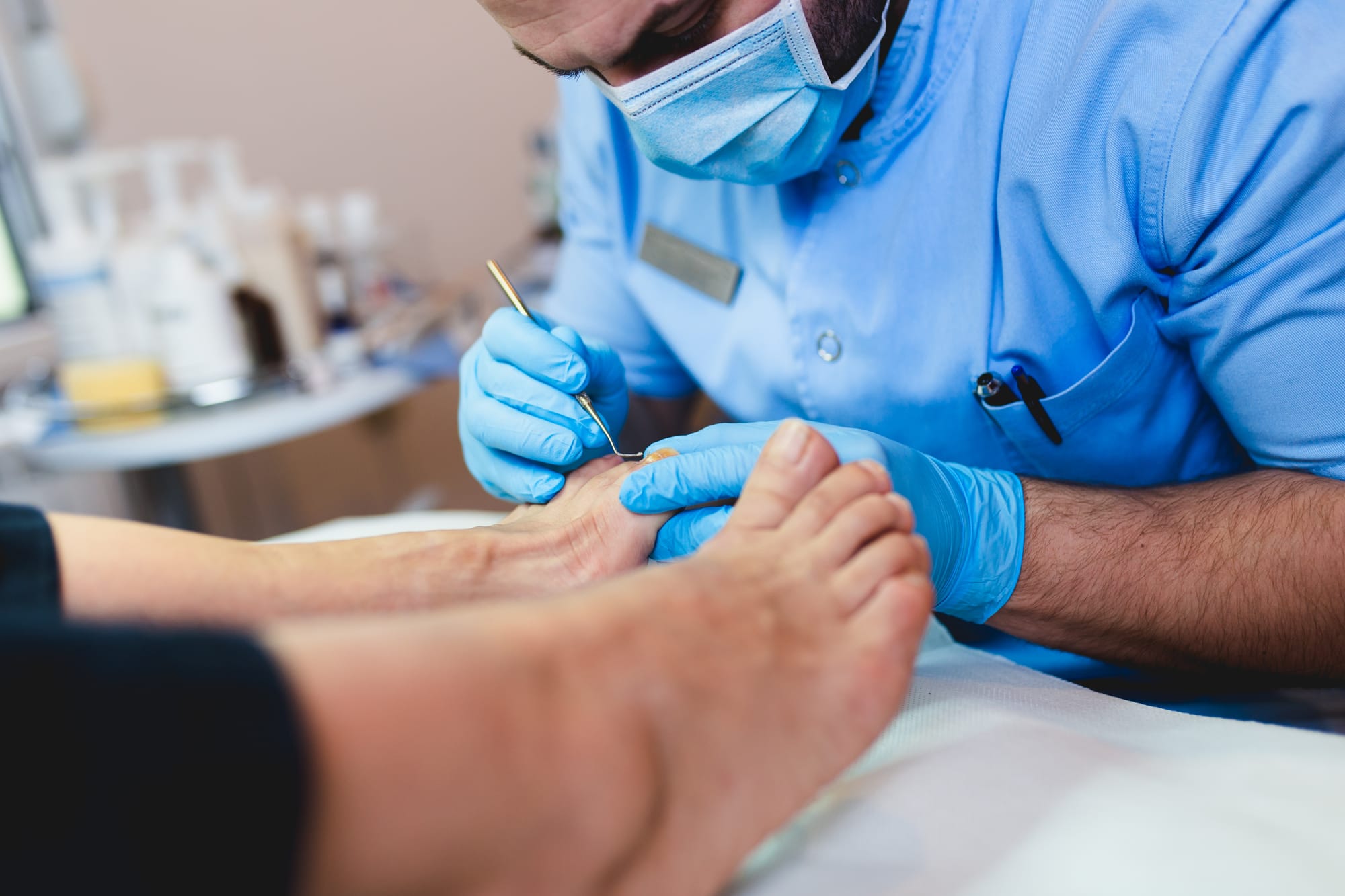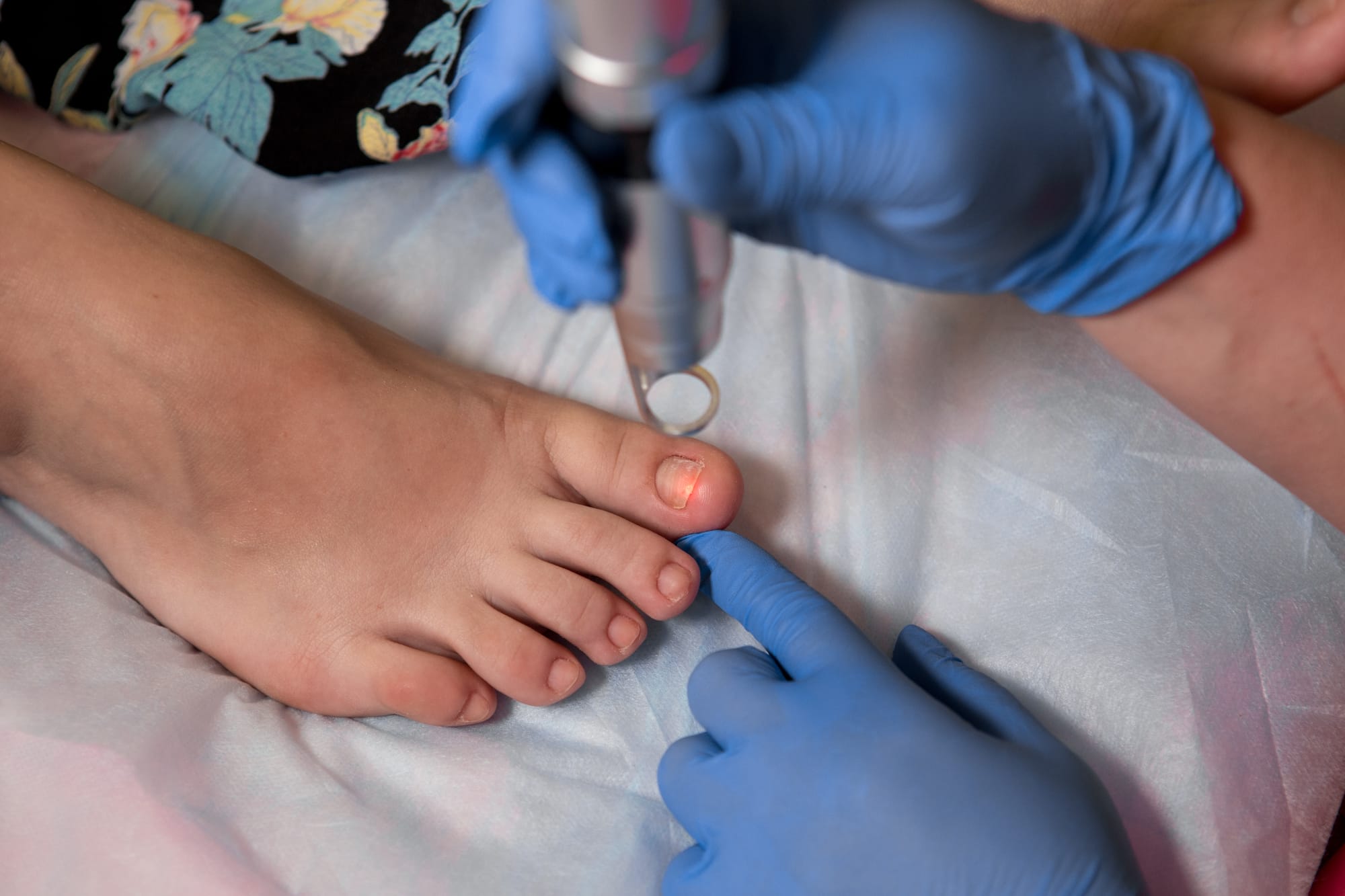Pros and Cons of Laser Treatment for Toenail Fungus
Laser treatment for toenail fungus offers a faster and generally safer alternative to older methods, but keep in mind the cost and its suitability.
4 min read

Got toenail fungus? You’re not alone. It’s a super common issue that can be a real pain to get rid of. But hey, there’s a new player in town – laser treatment. It sounds like something from a sci-fi movie, right? But it’s actually becoming a popular way to battle this pesky condition. So, whether you’re a patient weighing your options or simply curious about this modern medical marvel, explore the pros and cons of laser treatment for toenail fungus.
What is Laser Treatment for Toenail Fungus?
Laser treatment for toenail fungus is a straightforward, non-surgical approach that uses a laser beam to penetrate the nail and heat up the infected area, killing the fungus without causing any damage to the surrounding tissue. This quick and efficient procedure is usually done in a doctor’s office, taking just about 10 to 30 minutes for each session.
The number of sessions can really vary. It depends on how serious your fungus situation is, what kind of fungus you’re dealing with, how thick your nail is, and the type of laser your doc uses. Usually, you might be looking at anywhere from just one session to four or more.
These sessions are spread out, often several weeks apart. This gives your nail some breathing room to react to the treatment and lets your doc see how things are progressing. Remember, toenail fungus can be pretty stubborn. Even with laser zapping, it could take a good few months to clear up completely. That’s because your nail needs time to grow out and push out the infected part. So, a bit of patience is key!

Pros of Laser Treatment for Toenail Fungus
Highly Effective
Laser treatment really holds its own when it comes to dealing with toenail fungus. Research tells us it gets rid of the infection about 63% of the time, and if you’re using CO2 lasers, you’re looking at a 74% success rate. Okay, so it’s not a guaranteed fix-every-time kind of deal, but those numbers are still pretty noteworthy, especially compared to topical creams that only work around 20% of the time.
Non-invasive
Laser treatment for toenail fungus keeps things simple and surface-level – no need for any sort of incisions or injections. This approach not only cuts out the risk of scarring and infection but also means you’re in for a much smoother and less intimidating experience.
Quick and convenient
This procedure is all about speed and comfort. You’re in and out in less than 30 minutes, and most people only need between one to three sessions to start seeing a difference. It’s perfect for anyone with a packed schedule.
No Downtime
The best part? There’s zero downtime. You can jump right back into your daily routine as soon as you’re done with the session. No need to press pause on your work or other activities, making it a hassle-free choice for those who can’t afford to take time off.
No Medication Interaction
Since it’s purely a physical process, it doesn’t mess with any medications you might be on. This makes it a great option if you’re juggling other treatments or conditions. It’s all about targeting the fungus directly, without any chemical interactions or side effects that can sometimes come with medication-based treatments.

Cons of Laser Treatment for Toenail Fungus
High Cost
The biggest downside of the laser treatment is probably the price tag. A single session can set you back anywhere from $500 to $1,500, and since you’ll likely need more than one to get the best results, the total cost can really add up.
Not Covered by Insurance
Speaking of insurance, that’s another hitch. Most insurance plans see laser treatment for toenail fungus as a cosmetic thing, so they usually don’t cover it. That means you’ll have to pay for it all out of your own pocket.
Not Suitable for Everyone
Individuals with certain health conditions, such as poor circulation or diabetes, might need to think twice about laser treatment. These health issues can affect how well the treatment works or how your body responds to it. Consult with a healthcare professional to see if this procedure is a safe option for you.
Results may Vary
While laser treatment for toenail fungus has a high success rate, results may vary from person to person. Some patients may see complete elimination of the fungus, while others may only see a partial improvement. It is important to manage expectations and understand that results may not be guaranteed.
Looking at the pros and cons of laser treatment for toenail fungus, it’s a mixed bag. The good part? It’s known for being effective, non-invasive, and pretty convenient for those on the go. The not-so-great part? The cost can be steep, and don’t count on insurance to chip in. Before jumping in, it’s wise to get a doctor’s opinion to see if this treatment suits your situation. Got any personal tales with laser treatment? I’d love to hear them in the comments – your experience could help others!

